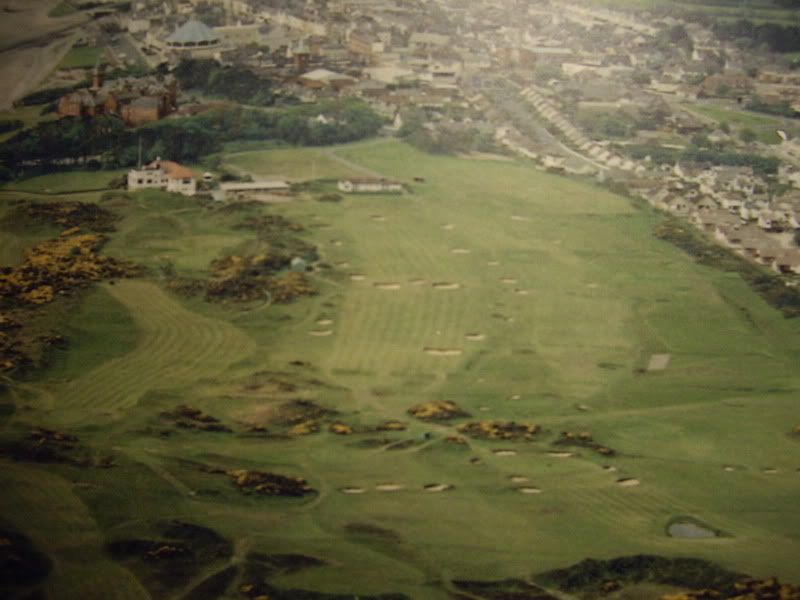Donald Steele was retained in 1997 to make some changes to the 18th, which evidently was considered an "ordinary finishing hole". The changes to the hole were summarized as a "programme of extensive bunkering". Prior to 1997, the 18th apparently was a fairly wide fairway bending a bit left with extensive bunkering, including some cross bunkers that seem somewhat consistent with the bunkering patterns on some of the front nine holes. (see the aerial below provided by Donal)

The programme of extensive bunkering led to a design that is reflected in this 1998 Strokesaver map provided by Martin. I count 24 bunkers, although six of those on the right seem to NLE. The fairway also looks considerably narrower than the fairway in the aerial above.

The current yardage guide shows 18 bunkers and the fairway is narrow and gets narrower as it nears the green, some 20 yards or less from 100 yards from the green on in. The 18th is the longest of the three par 5's but is not long at all by modern standards. It's defense lies in the narrow fairway, very penal bunkers and rough and a difficult green.


From the tee the fairway receded into the distance with Slieve Donard mountain looming in the background, but the location of the green not at all evident. Perhaps the white pole to the left of the roof in the distance marks the location? The topography is a bit bland after the drama of the first 16 holes, but the waving field of tawny fescue rough provides some colour and a different look than the rest of the course. There appears to be plenty of room to drive the ball if you don't go too deep where the fairway narrows down.

From down the fairway and zoomed in you see that the white pole is indeed an aiming point, but the green is tucked away left behind the bunkers and dune ridge. The bunker on the left looks particularly penal. From a playing perspective, I cannot comment on how to play the second shot to the narrow part of the fairway, as I snap hooked a 3 wood off the tin roof of a maintenance building about 150 yards short and left of the green. In a stroke of luck it was sitting pretty on mowed grass a couple of yards from the green side end of the building. A nice drawn blind 5 iron into the wind ended up on the green and rendered the narrow fairway and difficult green approach shot moot.
From closer in, you can see more of the green. The picture makes the fairway look wide here, but it is no more than 20 yards.


From in front of the green, you can see the crowned nature of it and the steep drop offs to the sides. The drop off continues around the back of the green as well.

This close up of the left side of the green better shows the steep drop off with a rough covered knob thrown in for fun. In retrospect, the knob is a reminder to me that there were innumerable places on the course where a random bounce or roll can land you in some serious jeopardy where a few feet away might be just fine. I guess I got mostly benign kicks and rolls, but the potential for scoring disaster is there. I think I'd prefer to play match play or Stableford matches on this course.

So, ends the tale of my RCD adventure. There was a certain sadness in leaving as it is unlikely that I will ever make my way back. RCD offers such a fine blend of setting and scenery and pure dramatic links land and conditioning and golfing challenge and accessibility that it is easy to see why it is one of the very top courses in the world.